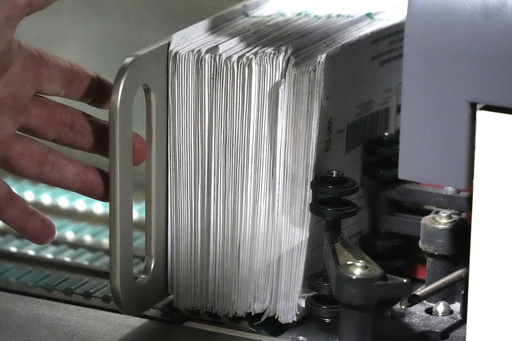
HARRISBURG, Pa. — In Pennsylvania, over 11,000 mail-in ballots from the November elections were rejected due to various technical issues. A significant number of these ballots failed to comply with the contentious requirement mandating that voters include accurate, handwritten dates on their return envelopes.
According to data released by the Department of State this week, approximately 2,600 ballots were disqualified for featuring incorrect dates, while nearly 2,100 were dismissed due to the absence of dates altogether. The Pennsylvania Supreme Court is currently set to deliberate in mid-January on whether this envelope date stipulation contradicts the state constitution’s guarantee of free and equal elections. This decision is part of an ongoing series of litigations initiated following the expansive introduction of mail-in voting under a 2019 law.
The elections office also reported that around 3,000 ballots were not counted because voters neglected to place their ballots inside a secrecy envelope. Furthermore, more than 3,500 were invalidated for lacking a signature. Additionally, nearly 7,000 mail-in ballots were turned away as they arrived after the 8 p.m. deadline on Election Day, when polling stations closed.
Elections officials who manage the day-to-day operations of Pennsylvania’s elections do not utilize the date on the outer envelope for operational purposes, as they timestamp ballots upon receipt to monitor when they were sent. Supporters of the date requirement, primarily from the Republican Party, argue that including dates reinforces election security.
The tally of over 11,000 rejected votes due to issues such as incorrect dates, missing signatures, or the absence of security envelopes marks an increase from the approximately 8,000 ballots rejected in the November 2023 elections. However, the electoral dynamics differed, with the 2024 election seeing a high turnout for both the presidential elections and a competitive U.S. Senate race, whereas the 2023 elections featured lower participation and only statewide judicial races.
“Every vote is precious — a single vote being rejected is intolerable,” stated Secretary of State Al Schmidt recently. He added that efforts have been made to lessen the chances of voter errors.
In the past year, the Department of State has redesigned mail-in ballot envelopes twice and implemented a voter education initiative aimed at decreasing the rejection rate. This resulted in the percentage of returned mail ballots rejected decreasing from approximately 2.4% during the April primary to about 1% in November, as reported by the agency.
“We aimed to minimize missteps by voters, particularly those who might be elderly or rushing to send their children to school,” Schmidt explained.
Vic Walczak, a lawyer with the ACLU of Pennsylvania, believes that while there have been advancements, there is still more work to be done to lower the rate of rejected mail-in ballots. “Eleven thousand is still too many, although it’s an improvement compared to previous rejection rates,” remarked Walczak, who is involved in the upcoming Supreme Court case. “While this progress is commendable, there is still no room for complacency.”
Around 2 million residents of Pennsylvania submitted mail-in ballots this fall, with approximately 88% of those ballots returned and counted. “Voter education is an ongoing effort, not a one-time initiative,” Schmidt emphasized. “Each rejected ballot — even a single one — signifies a failure for those who value democracy.”

